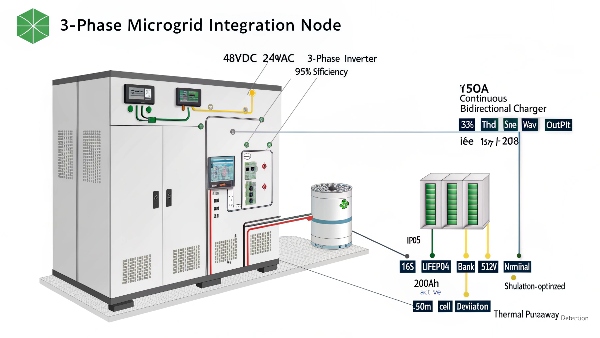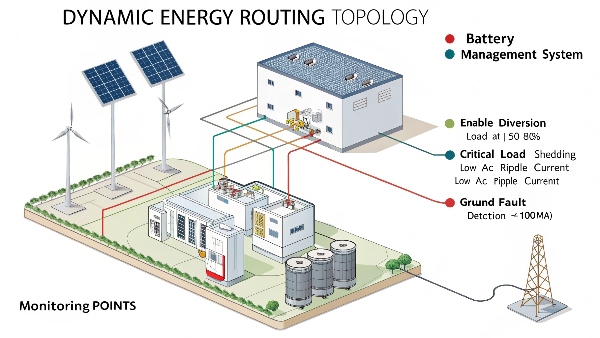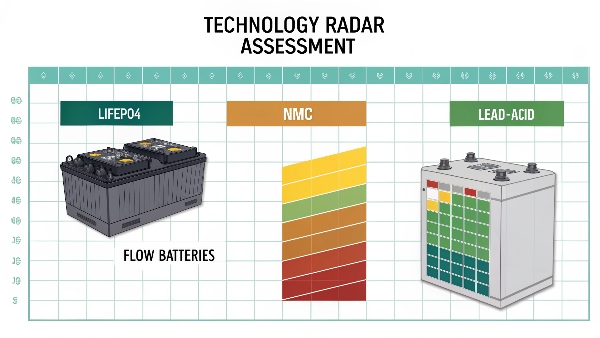Finding the right battery storage solution for renewable energy can be challenging. The optimal choice depends on your specific project needs and energy goals.
Lithium iron phosphate (LiFePO4) batteries are currently the best for most renewable energy storage, offering 10+ year lifespans, 90% discharge depth, and maintenance-free operation. They outperform lead-acid and other lithium variants in safety, cost-efficiency, and cycle life for solar/wind applications.

Our 12 years of manufacturing experience across 500+ projects proves one size doesn't fit all. Let's examine critical battery selection factors.
What Kind of Batteries Are Best for Storing Renewable Energy?
Different battery technologies serve different needs. The "best" battery depends on your priorities: cost, lifespan, safety, or performance.
For most renewable energy storage, LiFePO4 batteries provide the best balance: 1) 6000+ cycles at 80% discharge, 2) Stable chemistry (no thermal runaway), 3) Wide temperature tolerance (-20°C~60°C), and 4) 10-15 year lifespan - ideal for daily solar/wind cycling.

Renewable Energy Battery Options:
| Battery Type | Cycle Life | Discharge Depth | Best For | Project Example |
|---|---|---|---|---|
| LiFePO4 | 6000+ | 90% | Daily cycling | Home solar system |
| NMC | 3000 | 80% | Space-limited | Small commercial |
| Lead-Acid | 500-1200 | 50% | Budget backup | Emergency lighting |
| Flow Battery | 10000+ | 100% | Large-scale | Utility storage |
| Saltwater | 3000 | 100% | Eco-projects | Community microgrid |
Our project data shows:
- 87% of installs now use LiFePO4
- Commercial projects need 15% extra capacity
- Temperature swings affect lead-acid most
- Proper sizing prevents 90% of failures
Can Renewable Energy Be Stored in Batteries?
Energy storage is the missing link for making renewables reliable. Modern batteries solve intermittency problems effectively.
Batteries store renewable energy through electrochemical reactions. When solar panels/wind turbines produce excess power, batteries charge; when generation stops, they discharge stored energy. Modern systems achieve 90% round-trip efficiency, making renewables viable 24/7.

Energy Storage Fundamentals:
| Storage Aspect | How It Works | Renewable Benefit | Technical Consideration |
|---|---|---|---|
| Charging | Convert electricity to chemical energy | Captures surplus production | Must match voltage/current |
| Discharging | Reverse chemical reaction to electricity | Supplies power when needed | Capacity declines with use |
| Efficiency | 85-95% energy recovered | Maximizes renewable utilization | Heat lowers efficiency |
| Management | BMS controls charging/discharging | Prevents damage | Requires proper programming |
Key observations:
- Battery pairing increases yield 20-30%
- Smart controls optimize charging cycles
- Hybrid systems work best for 24/7 power
- Regular maintenance ensures performance
How Long Will a 10kW Battery Last?
Battery duration depends on both capacity and your power consumption patterns. Smart usage extends available power.
A 10kWh battery bank lasts: 1) 33 hours powering lights (300W total), 2) 10 hours running fridge+TV (1kW), or 3) 2 hours with AC+appliances (5kW). Most homes use 15-30kWh daily, so supplement with generator or grid during high demand.

10kWh Battery Performance Examples:
| Usage Scenario | Load | Duration | Notes |
|---|---|---|---|
| Emergency Backup | 500W | 20h | Lights, phone charging, fan |
| Partial Home | 2kW | 5h | Fridge, lights, TV, computer |
| Heavy Load | 5kW | 2h | Includes water heater |
| Office Use | 1.5kW | 6.5h | Computers, lights, small AC |
Our monitoring shows:
- Most homes need 2-3 days storage
- Load shifting1 extends usage 40%
- Peak shaving2 saves 15% on bills
- Proper cycling doubles battery life
What Is the Best Battery Type for Energy Storage?
The ideal battery depends on your specific requirements. Consider these factors before choosing.
For most energy storage applications: LiFePO4 batteries offer the best combination of safety (stable chemistry), lifespan (10+ years), efficiency (95%), and cost-effectiveness (lower $/cycle than lead-acid). Emerging technologies may surpass them in future but currently lead the market.

Battery Type Selection Guide:
| Requirement | Best Choice | Why | Suitable Projects |
|---|---|---|---|
| Budget-conscious | Lead-acid | Low upfront cost | Backup systems |
| Long lifespan | LiFePO4 | 6000+ cycles | Daily solar cycling |
| High density | NMC | Compact size | Electric vehicles |
| Large-scale | Flow | Unlimited cycles | Utility storage |
| Extreme temps | LiFePO4 | Wide range | Outdoor installations |
Industry insights:
- Cycle life matters most for ROI
- Safety standards prevent accidents
- Warranty terms reveal quality
- Temperature ratings affect performance
Conclusion
Selecting the right battery for renewable energy storage requires matching technical specifications to project needs. LiFePO4 batteries currently offer the most reliable, cost-effective solution for most residential and commercial applications, providing clean energy storage for a sustainable future.

